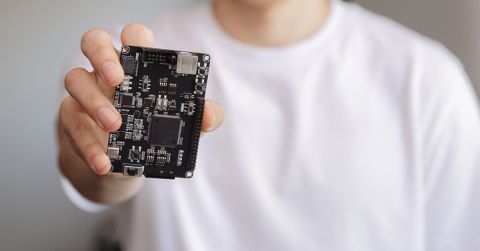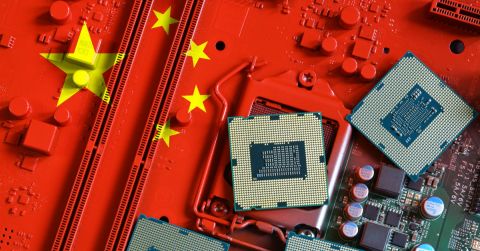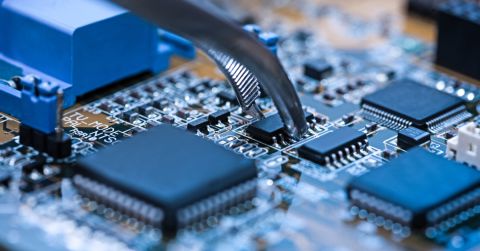USB to UART Converters Keep Legacy Transmission Paths Viable

A USB to UART converter is an integrated circuit used to send or receive serial data from a USB port into serial data that can be received or sent by a UART interface. UART interfaces are commonly known as RS-232, RS-422, or RS-485. These types of interfaces are commonly used for communication with hardware peripherals in digital systems.
UART is a universal asynchronous receiver/transmitter and is an integrated circuit used to convert parallel bytes into serial bit streams. This type of IC is commonly found on motherboards where CPUs output data in byte format. Parallel bytes take up too much real estate, so serial formats for transmitting data are the preferred form in today’s digital age. Otherwise, both the size and cost of modern electronics would be excessive.
USB is a universal serial bus and continues to gain popularity as the best form of serial transmission in digital products. However, there continue to exist abundant equipment that uses older forms of serial ports. Transmission of serial bits takes a different form in the older protocol transmissions of RS-232, RS-422, and RS-485, so converters exist to bridge the gap from old equipment to new.
Background for USB to UART Converters
UART converts both parallel and serial data on circuit boards in a form that can be used by older protocols. The older transmission protocols defined transmit and receive pins, as well as control pins to accommodate handshaking between host and slave devices. The data from UART is compatible with RS-232, RS-422, and RS-485 transmission schemes which are commonly used in industrial equipment.
 Older serial transmission ports require compatible hosts
Older serial transmission ports require compatible hosts
USB uses a transmission protocol that requires far fewer pins to communicate. It is in wide use as a serial transmission format because of its elegance. USB is used for many consumer products and for industrial applications as well. It is able to transmit across longer cables and at higher transmission rates, making it preferred. However, there are many older devices still being used, along with industrial devices that do not require faster transmission speeds. Because of this, a converter is necessary if wanting to condition data within older hardware to interface with new equipment.
 USB connectors are small form factor for fast transmission
USB connectors are small form factor for fast transmission
USB to UART converter chips are available for inclusion in circuit designs to interface older hardware to new devices. New devices typically do not support connector ports such as DB-9. To reduce cost and minimize space, new devices provide USB ports exclusively. Using an IC that will convert UART data for transmitting and receiving in USB form provides a bridge that allows the use of older devices with new. It is a great way to keep perfectly good equipment running with state of the art computers.
Consider Selecting a USB to UART Converter
When designing, consider adding a USB to UART converter to your design. Having such a converter enables your finished device increased interface possibilities. Increasing functionality is attractive to buyers and can help attract market segments to your design. Let’s take a look at some USB to UART converters that may work well in a variety of circuit blocks.
Microchip, MCP2221A
This converter increases functionality by including I2C interfaces along with UART. A demo board, the ADM00678, is available for developing your interface before finalizing your design blocks.
The MCP2221A is a USB-to-UART serial converter that enables USB connectivity in applications that have UART and/or I2C interfaces. The device reduces external components by integrating the USB termination resistors and the oscillator needed for USB operation. The MCP2221A has four GP pins for miscellaneous functionalities (including GPIO, USBCFG, SSPND, Clock Output, ADC, DAC and interrupt detector).
 Found on page 2 of MCP2221A datasheet
Found on page 2 of MCP2221A datasheet
Silicon Labs, CP2102N
This part boasts a simple GUI-based configurator removing the need for firmware development for use in your design. It incorporates internal resistors for USB configuration and data transfer rates up to 3 Mbaud. Other features include USB battery charger detection, remote wakeup, and low operating current of 9.5mA. Silicon Labs offers an evaluation kit, the CP2102N-EK, for evaluation of this part before finalizing use in your next prototype.
The CP2102N devices, part of the USBXpress family, are designed to quickly add USB to your applications by eliminating firmware complexity and reducing development time.
 Found on page 1 of USBXpress™ Family CP2102N Data Sheet
Found on page 1 of USBXpress™ Family CP2102N Data Sheet
Texas Instruments, TUSB3410
This is a feature-rich USB to UART serial port controller, incorporating a microcontroller and internal memory. Such features allow faster transmission of your design’s data by providing extra space for moving bits on their way. This part may be tested on the development kit offered for evaluation, the TUSB34310.
The TUSB3410 device provides bridging between a USB port and an enhanced UART serial port. The device contains an 8052 microcontroller unit (MCU) with 16KB of RAM that can be loaded from the host or from the external onboard memory through an I2C. The device also contains 10KB of ROM that allows the MCU to configure the USB port at boot time. The ROM code also contains an I2C bootloader. All device functions (such as the USB command decoding, UART setup, and error reporting) are managed by the internal MCU firmware in unison with the PC host.
 Found on page 2 of TUSB3410 datasheet
Found on page 2 of TUSB3410 datasheet
USB to UART converter ICs are great parts to include in any digital design for devices intended to interface with legacy equipment. The parts allow conversion within your design blocks, removing the need for extraneous cables between devices. For comparative pricing and for similar parts searches, take a look at the parts listed above.
Stay up-to-date with our latest articles by signing up for our newsletter.








